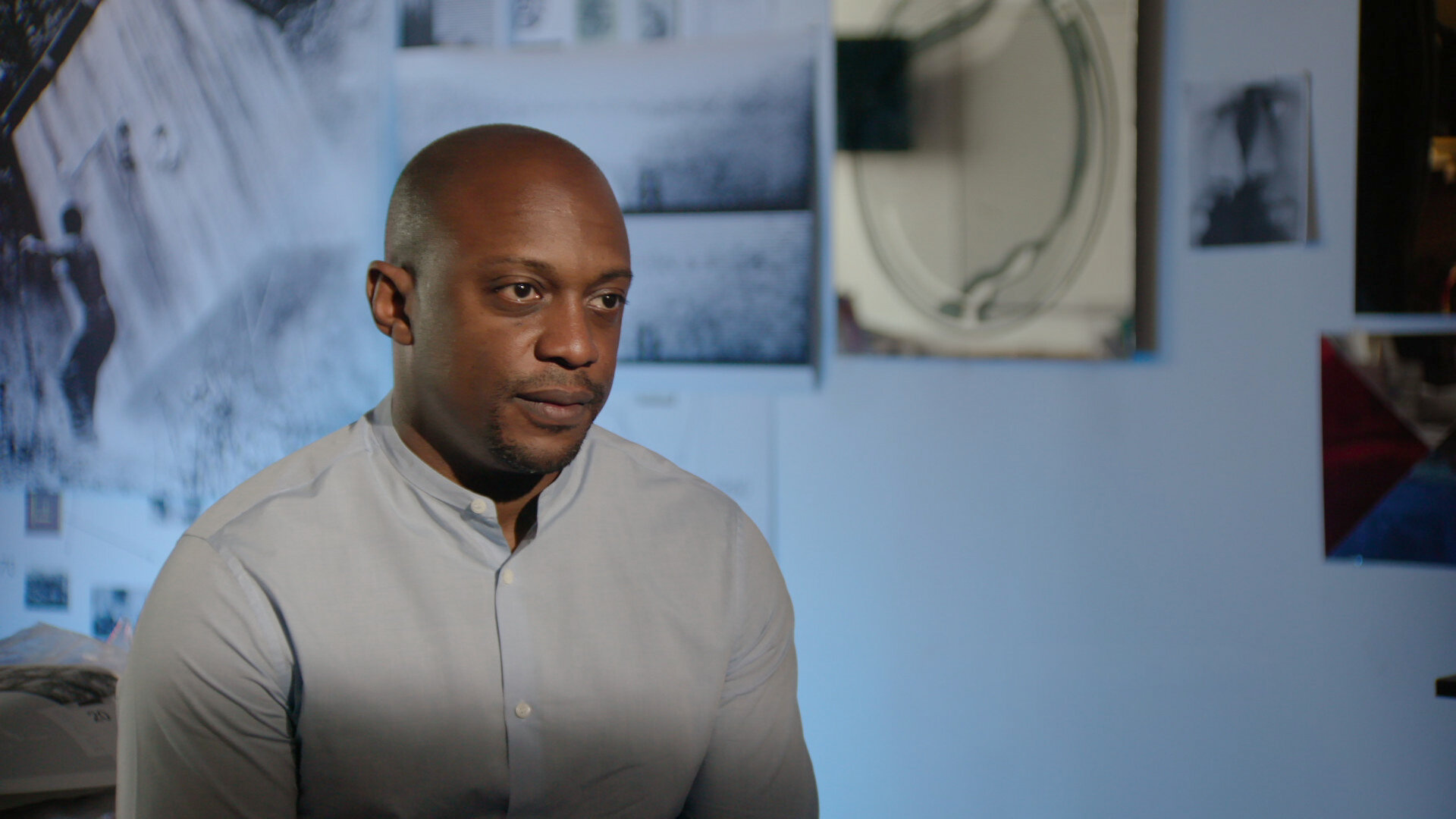Film Review: Black Art: In the Absence of Light
FEATURED: Kara Walker, Photo Credit: Courtesy HBO
The belated acknowledgement of white America’s shameful history of racism, exclusion and deprivation on so many levels, both blatant and subtle, is finally beginning to be redressed. That truth is full of pain. The good news is the changing attitude of white American culture toward diversity in general and Black Americans in particular, has produced a proliferation of books, films, exhibitions, and conversations exploring and celebrating the complex legacy of the African American experience from the Black point of view. What is apparent is the resilience and resolve in the face of generations of closed doors and the vast reservoir of accomplished and significant works of art behind those doors and hopefully a repositioning of those denied their rightful place in our history.
FEATURED: David Driskell, Photo Credit: Courtesy HBO
The basis of this film is a groundbreaking exhibition “Two Centuries of Black American Art” in 1976 which opened at LACMA. Curated by David Driskell, the revered artist, historian and head of the Art Department at Fisk University, a historic black university (HBCU). It is a survey which included 200 works of art from the mid 18th century to mid 20th century. It included classical landscapes and portraits, vibrant elaborate figurative paintings depicting Black subjects engaged in daily life and leisure activities. It was new to nearly everyone. To the surprise of many, it was a total blockbuster which broke attendance records in Atlanta, Dallas and the Brooklyn Museum as well as Los Angeles. The originality, vitality and intensity of this work had not been seen by the viewing public at that time. Significantly, it was the first time that Black artists had the experience of seeing the work of their own people in a museum.
FEATURED: Amy Sherald painting ‘Precious jewels by the sea’, 2019, Photo Credit: Courtesy HBO
The film opens with archival footage of Driskell organizing the show, augmented by interviews with curators, art historians, critics and artists. The interviews trace, the importance of the Black universities in fostering aspiring artists, the rise of Black collectors, like music mogul Swizz Beats. The significance of the Studio Museum of Harlem, founded in 1969 as an incubator for Black artists and which continues to be the most influential Black cultural center today can not be overstated as an source of empowerment.
FEATURED: Hank Willis Thomas, Photo Credit: Courtesy HBO
Similarly, in the 60s Black photographers formed their own association, The Kamoinge Workshop, to foster and show the work of their underrepresented members. There is a long overdue show of that group’s work on view currently at the Whitney. It is loaded with first rate work in glorious black and white, with images depicting the lived experience of Black Americans. It is full of pathos, joy and soulful humanity.
FEATURED: David Driskell, Photo Credit: Courtesy HBO
The artists interviewed are fascinating, outspoken, eloquent and thoughtful. They range from Kara Walker, Faith Ringgold, Hank Willis Thomas, Kehinde Wiley, Amy Sherald, Theaster Gates, Kerry James Marshall and Betye Saar. The skillful direction of Sam Pollard (MLK/FBI) deftly weaves their eloquent words and works through the narrative of Henry Louis Gates Jr. (MLK/FBI). They speak about their art in the context of the cultural and political landscape, as well as their practices and personal philosophies. It is never less than fully engaging and brimming with fascinating information. The phrase in the subtitle “In the Absence of Light” refers to the idea of making art even when no one is looking (ie: the traditionally white gate keepers). It feels both rueful, triumphant and hopeful. I could not recommend it more. It is a must see.
(Available on HBO)












